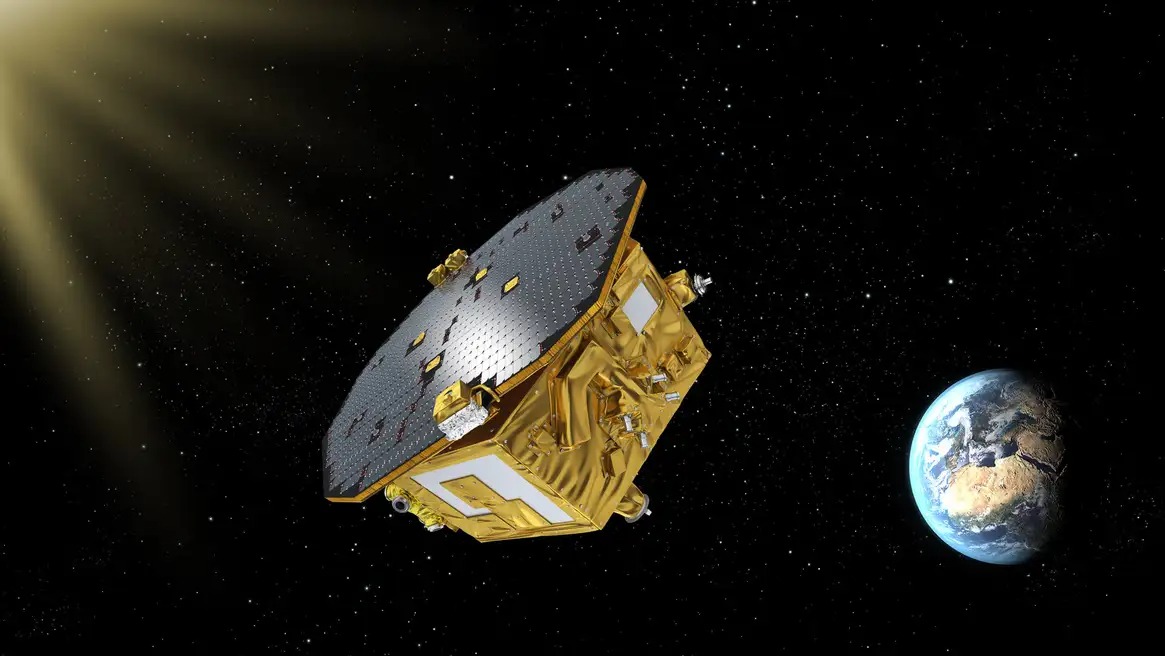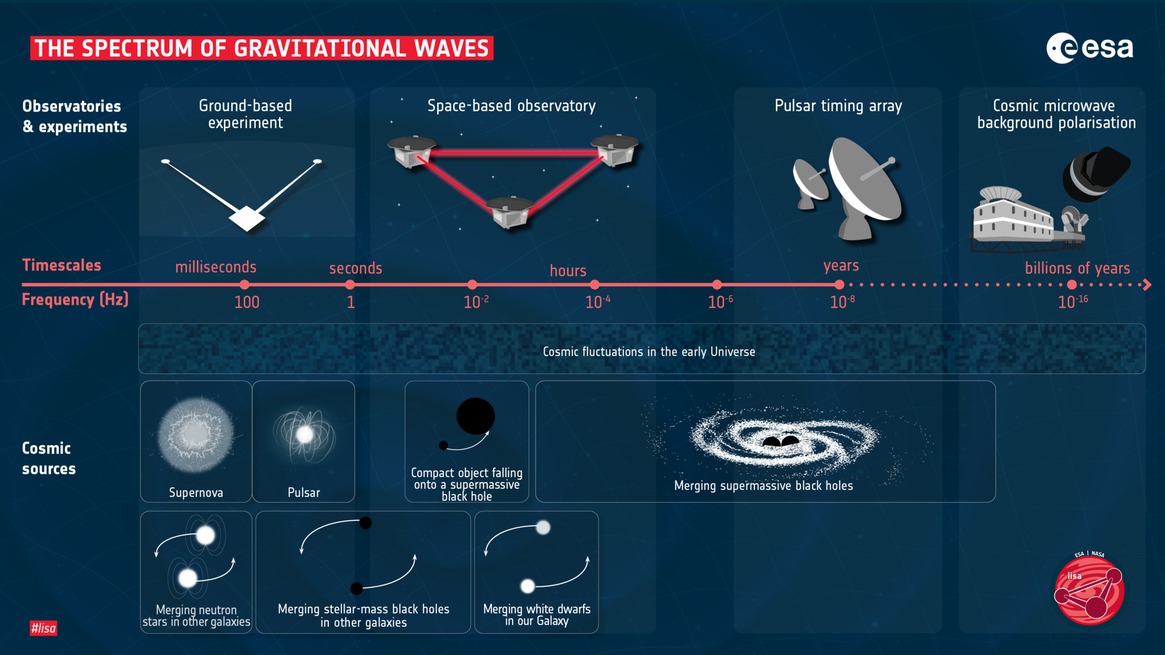The space mission called LISA — the “Laser Interferometer Space Antenna” — has completed phase A of its life cycle. The project has received an important technical and economic justification. Headed by the European Space Agency (ESA) in cooperation with NASA, the LISA gravitational-wave observatory will consist of three spacecraft that will orbit the Sun in the shape of a triangle. Each “side” of this triangle will have a length of 2.4 million kilometers.

As an interferometer, similar to the ground-based LIGO, LISA will track the distance between the three spacecraft very accurately. When a passing gravitational wave causes a distortion of spacetime, LISA will detect it. This change is determined by a small change in the distance between the spacecraft. LISA will also be able to determine which part of the Universe the gravitational wave came from.
The importance of detecting gravitational waves
Gravitational waves, the existence of which Einstein predicted, are generated by some of the most extreme astrophysical phenomena in the Universe. When black holes and neutron stars — some of the densest and most massive objects — orbit each other or merge, they cause ripples in the fabric of space-time.

The LIGO instrument went down in history as the first to detect gravitational waves in 2015. Since then, astrophysicists have been wanting to catch more of these waves. But some are harder to observe than others, because mergers of different masses produce waves of different frequencies. Mergers of small black holes and supernova-like explosions are detected by observatories such as LIGO. But mergers of supermassive black holes emit frequencies that cannot be caught with the help of 4-kilometer LIGO arms – a long length is needed. Therefore, the 2.4 million km long LISA arms will be able to detect events with a lower frequency, such as collisions of giant black holes.
20-year development
The LISA hardware has already been tested by the LISA Pathfinder mission, which was launched in 2015 and demonstrated how it is possible to hold the devices in one place in space and measure their distance between each other with extraordinary accuracy. After Stage A, LISA will move on to stage B1, during which the technology for the mission will be developed and its final design selected. Technologies for LISA will include laser systems, telescopes and sensors.
The construction of the spacecraft will not begin until 2024. The mission is expected to be launched in 2037 – 20 years after the ESA chose it as a priority.
According to ESA
Follow us on Twitter to get the most interesting space news in time
https://twitter.com/ust_magazine

